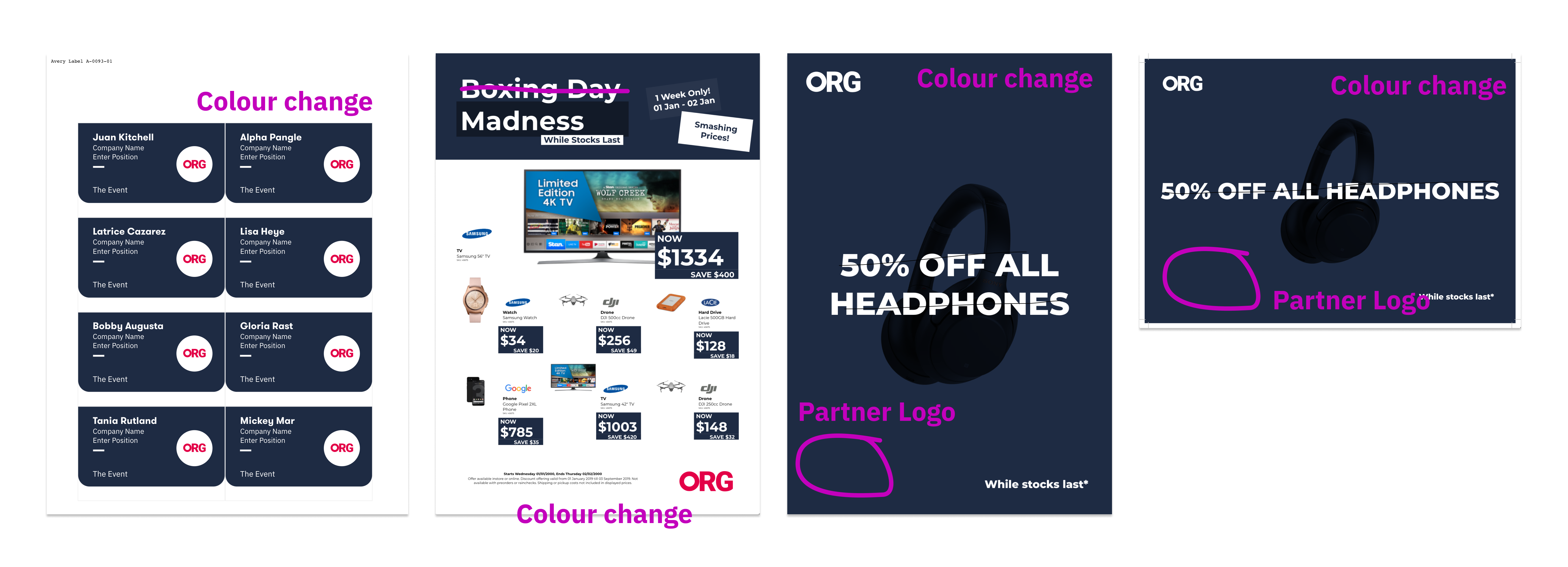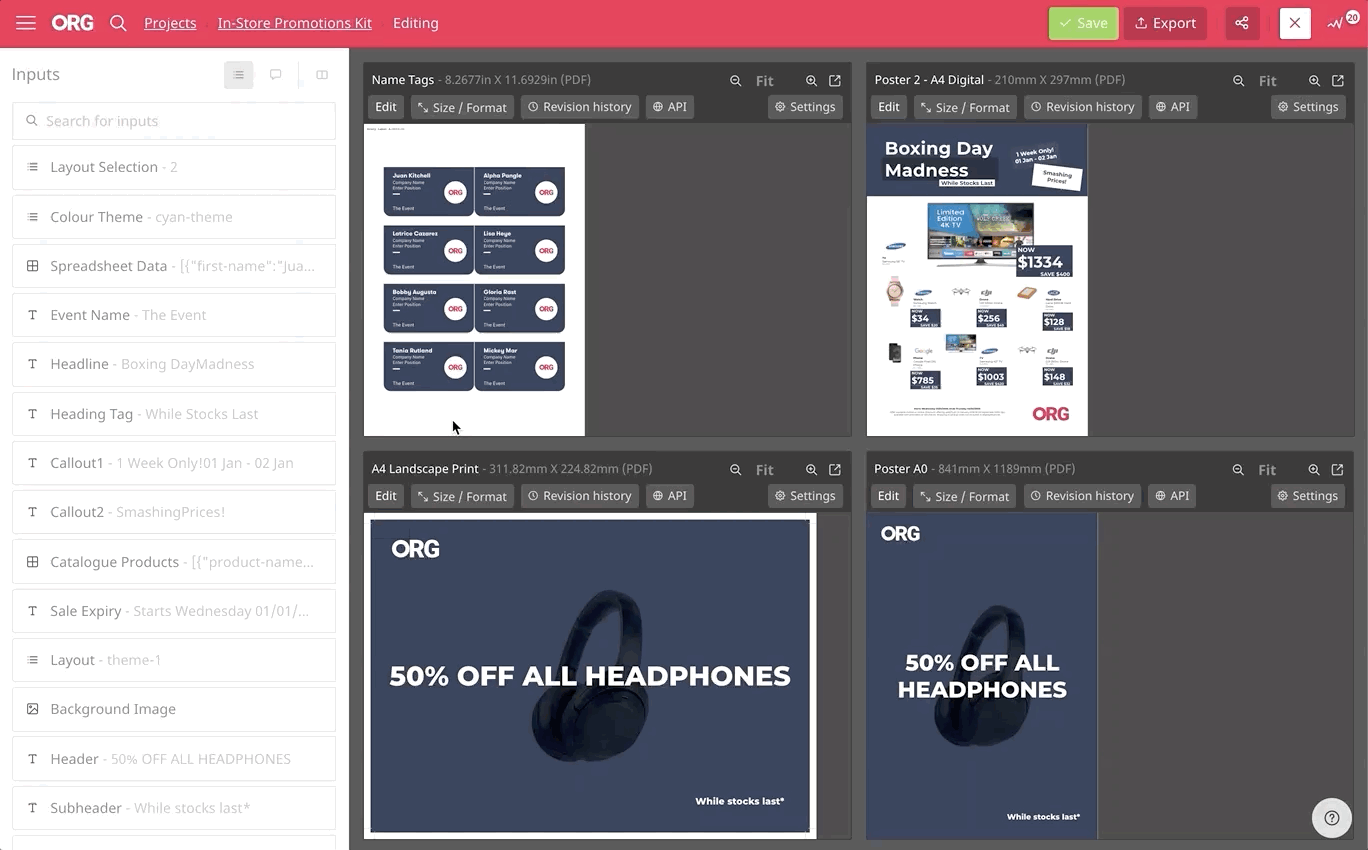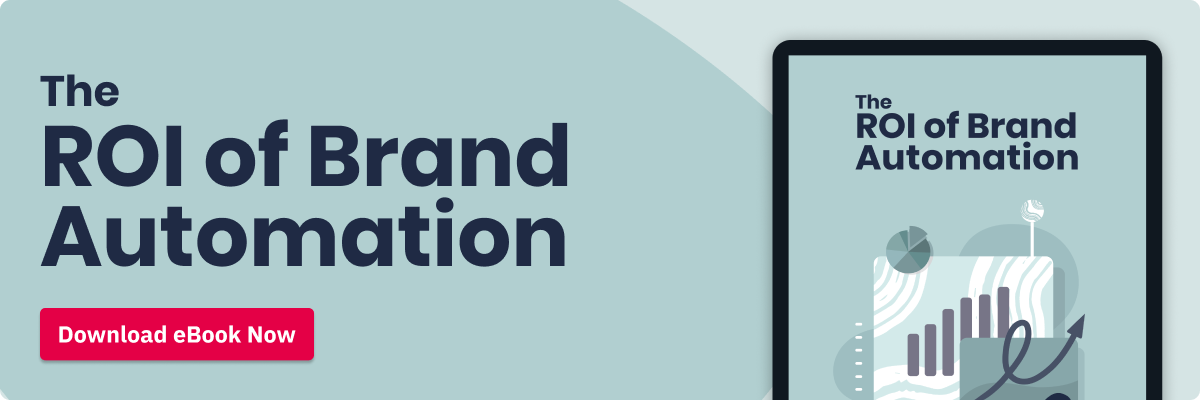Marketers love to work for brands that are proactive, organised and on the front foot, because when all hands are helping to get the brand and brand message out there, it makes our job so much easier.
On the flip side, this can also give rise to one of the big challenges of centralised marketing teams: managing and fulfilling the many requests for marketing collateral that come to marketing from throughout the organisation.
Marketing teams frequently don’t have access to the level of in-house production resources required to turn these around quickly.
Instead, what often happens is that the important, strategic, longer-term projects we’re supposed to be completing, get pushed aside in favour of urgent, ad-hoc requests.
The Brief
Here’s a fairly common scenario: a senior sales or product manager has an event coming up. They do events several times a year. This is a new one, and it needs a new concept, invitation, landing page and related emails.
Sometimes that’s the only brief: “We did this last year. Can we have something a bit different, please?”

Even when a more formal brief is provided, it’s often a hit-and-miss process. Sometimes marketing receives a few lines in an email. Often, briefing forms come back half-filled out.
That leaves the central marketing team to do much of the chasing: discovering all the specifics of the actual project, understanding who the target market is, determining the mandatory inclusions, and so on.
By the time you have the information needed just to complete the brief so you can send it to your agency or creative team, a week has gone by.
The Reverse Brief
Often, the agency will reverse-brief the project back to you in their own words, to ensure they clearly understand what they’re required to do.
This is the brief that is actionable - once you agree to it. Only when you have reached this point can the first draft of the required asset be created.
Once the piece of collateral has been created, it gets sent back to central marketing, which will review it and ensure it’s on-brand before sending it to the original requestor and approvers.
The creative team may be briefed to make some amendments before a second version is sent to the requestor, and then to the final approvers (who may suggest amendments of their own).

Lengthening lead times
This process for managing marketing requests, review and approvals is all perfectly logical and understandable. For many organisations, it’s what business-as-usual looks like when it comes to the creative production process.
Unfortunately, it’s also somewhat slow, opaque, and resource-heavy.
And it explains why requests for marketing work can spend weeks lost in a convoluted brand tango before a final version can be produced.
That can feel like a long time if all your requestor wanted was a flyer to promote their next event.
Streamlining the creative production process
At Outfit, many of our clients have dramatically shortened the process from marketing request and creative production to approved final asset - in some cases, slashing it from weeks to just minutes.
This improvement doesn’t involve hiring more staff, decentralising marketing or increasing marketing budgets.
All it requires is access to an easy-to-use tool, and the right attitude, namely:
- Access to approved marketing asset templates in a brand automation platform such as Outfit
- A proactive culture that enables the requestor to fill out and modify those templates (within pre-approved brand guidelines) to create a first draft of the asset they need.
In this scenario, the first draft effectively becomes a reverse-brief: from the requestor to marketing.
“This is what I need,” the requestor would say. “Run your eye over it, amend anything that needs to be amended, and let’s get it in-market.”
The big difference is they’re only working with brand-approved layouts, typefaces, colours and imagery in the template provided. They can’t go rogue, even if they wanted to.
Marketing as enabler
Suddenly, the role of central marketing changes. Marketing is no longer trying to make sense of the request. You no longer need to spend the bulk of your time policing the brand guidelines.
You’re reviewing on-brand assets, rather than heading off on a review merry-go-round that no one can see, and therefore no one values.
Marketing becomes the chief enabler in a responsive organisation - rather than the blocker at head office - by providing the toolkit and the intellectual property that enables the organisation to get messages to market quickly and effectively.
The attitude of the requestor also changes. They have the tools and the built-in brand guidelines to self-create the very marketing asset they need.
They can draft the headline. They can choose the image (from a pre-approved selection). They can pop them in the document (within pre-determined parameters), and send it off for approval.
It’s like entering a race on the final straight, instead of struggling through qualifying, a couple of false starts and then doing some hard yards before the finish line finally appears in view.
Using Outfit to reverse-brief
Who are some of our happy customers already using Outfit to reverse-brief creative work?
Monash University is one example. They handed more than 500 users the responsibility for self-creating their own collateral.
“Many staff work in functions that require them to produce collateral,” according to Director, Brand & Marketing Strategy Vicki Goodwin.
“One of our biggest goals is to empower people to do what they love – we want them to do the best job they can and don’t want to slow them down and make it difficult. Outfit has allowed more people in the University to access great tools that allow them to stay on-brand.”
Monash is far from the only customer using Outfit to slash weeks from the creative production process.
Our clients use Outfit to reverse-brief:
- Emails
- Posters
- Flyers
- Digital ads - and much, much more.
If it can be rendered online, it can be produced in Outfit.
What this means is that the volume of marketing collateral that can be produced by an organisation is dramatically increased. Time to market is shortened. Time to opportunity is shortened. Time to work on strategic marketing projects increases. And the return on your total marketing investment goes up.
